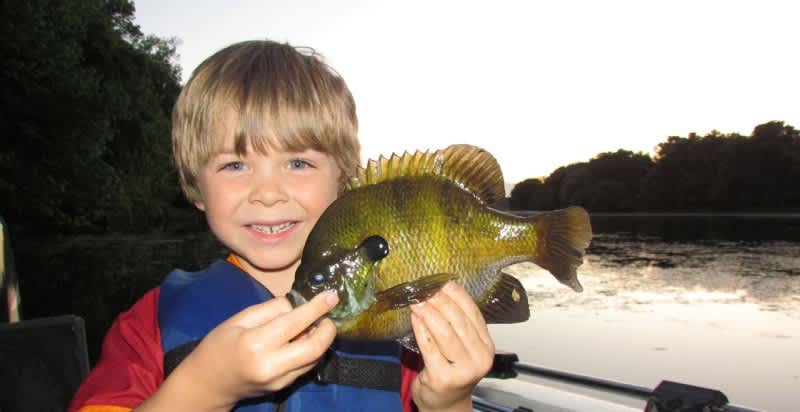Tapping Undiscovered Bluegills with High Resolution Sonar Technology
Jason Halfen 05.29.12

Bluegills are among the most widely distributed panfish species in North America, and likely represent the very first fish that most young anglers have the opportunity to catch. Abundant in lakes and rivers, scrappy fighters on light tackle, and tasty on the plate, bluegills play many important roles in fishing for sport or for a meal.
Bluegills make annual spawning runs to shallow water when water temperatures first eclipse the 70 degree mark, and the time that bluegills spend in their beds represents an excellent opportunity to target some of the largest fish in a particular water body. The most heavily pressured and vulnerable bluegills, particularly on urban waters, will be the ones that build their nesting “colonies” in the shallowest water. These shallow nests are generally visible to anglers from boats or from shore, and fish nesting in those colonies will either be harvested quickly, or, if released after an initial catch, will become very sensitive to angler pressure and therefore refuse to bite again. How should anglers respond when the shallow nesting bite fizzles out?
In my boat, I employ advanced Side Imaging technology from Humminbird to find completely untapped bluegill nesting colonies in deeper water. These colonies are deep enough to avoid visual detection by anglers, and are essentially undetectable with “traditional” down-looking sonar. High-resolution Side Imaging from Humminbird makes these deep nesting colonies easy to identify and then mark with GPS waypoints, allowing anglers to target previously undiscovered, deeper-water bluegills in near solitude.

Humminbird Side Imaging allows anglers to search the water column and the lake’s bottom, both for structure and for fish, on both sides of the boat. The high frequency Side Imaging sonar and paper-thin sonar beam shape used by Humminbird Fishing Systems allows for easy identification of even very small objects, from baitfish to bluegill nests. This image is a screen capture from my Humminbird 1198c Side Imaging Fishing System, which illustrates a bluegill nesting colony in 8 feet of water. The colony begins at the base of the primary shoreline break (falling rapidly from 3 feet down to 8 feet), and extends for nearly 50 feet away from the break. While the vast majority of anglers targeting nesting bluegills are searching for visible beds in very shallow water, these deep water bluegill beds represent a completely untapped resource. My Humminbird Side Imaging fishing system allows me to find these colonies, mark them with GPS waypoints, and then return to target them with precision using simple presentations.
When fishing these deep water bluegill colonies, I avoid using live bait if at all possible. While small worms or leeches will certainly turn large numbers of spawning bluegills, they will also result in many deeply hooked fish that will invariably be lost from the fishery. Moreover, bluegills on nest guard duty are typically aggressive enough to not require a live bait offering.

My preferred “slow” presentation is to dangle a 1/32 oz VMC Hot Skirt Jig beneath a slip bobber, with the bobber set to match the water depth. I will cast this combination beyond the colony, and then work it through the nesting area with a very slow stop-and-go retrieve. If bluegills are present, they will hit this unbaited jig with authority. Once a few bluegills are pulled from the group, I can usually turn additional fish by tipping the jig with a small piece of the tail from a Trigger X walleye minnow. The feeding pheromones released from Trigger X walleye baits will cause wary bluegills to overcome their initial hesitation and attack the all-artificial “intruder”. When the bite is really “hot”, I will switch over to a Rapala Ultra Light shad, especially in a bluegill-angering pattern like firetiger or silver/blue. These baits are slow-sinking with a tight action; be sure to allow the bait to fall into the nesting colony before you begin your retrieve.
Deep water bluegill colonies represent an untapped sport fishing opportunity, and, like their shallow water counterparts, can be vulnerable to over-harvest. Please protect this resource and ensure that bluegill populations in your favorite body of water remain healthy for years to come.
Dr. Jason Halfen is a multi-species guide and teaching pro based in western Wisconsin. For more information, visit http://www.JasonHalfenOutdoors.com.

